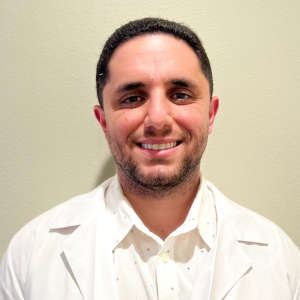
If you notice your child moves a little stiffly, gets sick more often than usual, or has a belly that’s rounder than expected, you might think it’s just a part of growth. But sometimes, these small changes could be an early sign of a rare genetic condition called mucopolysaccharidosis, or MPS. Mucopolysaccharidosis Type I (MPS I) and Mucopolysaccharidosis Type II (MPS II) are two of the most recognized forms.
Both forms of MPS cause the buildup of complex sugar due to an enzyme deficiency, but they each differ in their cause. The buildup of sugar affects different parts of the body, from joints and facial features to the heart and brain.
Read on to learn more about what mucopolysaccharidosis (MPS) is, its subtypes (MPS I and MPS II), how both types differ, and the similarities they share.
Mucopolysaccharidosis (MPS): Overview
Mucopolysaccharidoses (MPS) are a group of rare inherited metabolic disorders caused by genetic defects. These disorders occur when the body does not properly break down (digest) complex sugar molecules, also known as mucopolysaccharides or glycosaminoglycans (GAGs).
Normally, GAGs help in building bone, tendons, cartilage, corneas, skin, and connective tissue. They are also found in the fluid that lubricates the joints. These complex sugar molecules are recycled and broken down within the cells via an 11-step process; each step has a specialized enzyme that helps in breaking down these complex sugar molecules.
However, in MPS, one of the enzymes is either missing or dysfunctional, leading to the inability to break down GAGs. Over time, GAGs start to build up in the blood, brain, spinal cord, and connective tissues.
The buildup of GAG within the cells causes permanent, progressive cellular damage that affects the person’s appearance, physical abilities, organ and system functioning, and, in most cases, cognitive development.
Furthermore, like Pompe disease, MPS is also classified within a larger group of disorders called lysosomal storage diseases (LSDs), in which lysosomes (tiny digestive and recycling centers inside cells) lack specific enzymes that are needed in the breakdown of complex molecules like sugars (glycogen or glycosaminoglycans), fats, and proteins into smaller usable components.
Types of Mucopolysaccharidoses (MPS)
MPS has seven different types, and each type is linked to the kind of enzyme missing. We’ll only focus on MPS I and MPS II.
- Mucopolysaccharidosis Type I (MPS I)
Mucopolysaccharidosis type I, or MPS I, is a multisystem disorder, which means this form affects many parts of the body. MPS I is caused by a deficiency of alpha-L-iduronidase (IDUA) enzyme that breaks down the dermatan sulphate and heparan sulphate (types of GAGs) inside the lysosomes.
Without the IDUA enzyme, dermatan sulphate and heparan sulphate accumulate inside the cells, resulting in the symptoms of MPS I.
Based on the severity of symptoms, MPS I is further classified into three subtypes:
- Hurler syndrome (MPS I-H): This is the most severe form that often occurs in infancy.
- Hurler–Scheie syndrome (MPS I-H/S): This is a moderate form, with symptoms becoming apparent between 3 and 6 years of age.
- Scheie syndrome (MPS I-S): This is the mildest form, with symptoms appearing around 5 years of age.
- Mucopolysaccharidosis Type II (MPS II)
Mucopolysaccharidosis type II (MPS II), also known as Hunter syndrome, is caused by the deficiency of iduronate-2-sulfatase (I2S) enzyme. This enzyme not only helps in the breakdown of GAGs (i.e., dermatan sulphate and heparan sulphate), but also removes the sulfate group from the sugar iduronic acid before further breakdown steps can happen.
However, a lack of iduronate-2-sulfatase enzyme causes the same buildup of dermatan sulphate and heparan sulphate within the cells, leading to similar symptoms as MPS I.
Hunter syndrome (MPS II) can be mild or severe, with symptoms first appearing between 2 and 4 years of age.
Symptoms and Early Signs
The early signs and symptoms of MPS I and II can overlap, but the exact symptoms can vary depending on the type and severity. Some major clinical symptoms of MPS I & II include:
- Cloudy corneas (but not in MPS II)
- Skeletal dysfunction, such as joint stiffness
- Coarse facial features, like a broader nose, thick lips, and an enlarged tongue, over time
- Coarse hair
- Intellectual disability (which can be severe in MPS II)
- Heart problems
- Hearing loss (worse over time in the case of MPS II)
- Vision impairment
- Inguinal and umbilical hernia
- Sleep apnea
- Hepatosplenomegaly (enlarged liver and spleen, which gives the belly a rounded appearance)
- Fluid buildup in the brain
- Carpal tunnel syndrome
- Cardiac and respiratory diseases
In severe forms, patients may also experience:
- Developmental delay (mild in the case of MPS II)
- Behavioral challenges (e.g., hyperactivity, aggression, or anxiety)

Causes and Inheritance Pattern in MPS I and MPS II
MPS I and II differ in terms of cause and inheritance pattern.
- Cause
A mutation (change) in a specific gene that makes an enzyme is what causes MPS. But the two types of MPS differ in the affected gene. MPS I is characterized by a mutation in the IDUA gene, which makes the alpha-L-iduronidase (IDUA) enzyme. But in MPS II, a mutation occurs in the IDS gene, which makes the iduronate 2-sulfatase (I2S) enzyme.
- Inheritance Pattern
The inheritance pattern is another significant difference between MPS I and MPS II.
MPS I is inherited in an autosomal recessive pattern, which means both parents must pass on the defective or mutated IDUA gene for the child to be affected.
On the other hand, MPS II is inherited in an X-linked pattern, which means the mutated IDS gene is present on the X chromosome. This pattern mostly affects males because they have only one X chromosome, though females can be carriers and may show mild symptoms in rare cases.
Prevalence: Affected Populations
The severe form of MPS I (Hurler syndrome) affects around 1 in 100,000 newborns, while the less severe form is rare and affects about 1 in 500,000 newborns.
MPS II or Hunter syndrome is rare and only affects around 1 out of every 100,000 to 170,000 male children.
Diagnosis and Tests for MPS I and MPS II
Healthcare providers perform diagnostic processes or tests to confirm the diagnosis of MPS I and II. This includes:
- Clinical examination: The healthcare provider looks for signs such as enlarged liver/spleen, joint stiffness, or characteristic facial features.
- Urine test: To check the unusually high level of GAGs (i.e., heparin and dermatan sulfates) in the urine.
- Enzyme assay: A blood or skin test helps to check the level of enzyme activity (IDUA or I2S).
- Genetic testing: Molecular genetic analysis helps to identify the changes (mutations) in a gene to confirm a diagnosis.
In some countries, including the United States, newborn screening for MPS I has been approved recently. This will enable babies to be diagnosed before symptoms appear.
Standard Therapies for MPS I and MPS II
Currently, there is no cure for MPS I or II. But enzyme replacement therapy and hematopoietic stem cell transplantation are being used as standard therapies to slow disease progression and improve quality of life.
- Enzyme Replacement Therapy (ERT)
In ERT, a genetically engineered (recombinant) form of the deficient enzyme is administered into the child’s vein (intravenously) once a week.
In patients with MPS I, Laronidase (Aldurazyme), a medication FDA-approved in 2003, is used to replace the missing α-L-iduronidase enzyme. For MPS II, Idursulfase (Elaprase), a medication FDA-approved in 2006, is used to replace the missing iduronate-2-sulfatase enzyme.
- Hematopoietic Stem Cell Transplantation (HSCT)
HSCT is only used for MPS I, as it is more effective in treating MPS I (Hurler syndrome) if started early in life. In this therapy, the patient’s bone marrow is replaced with healthy donor marrow, which can produce the missing enzyme.
HSCT can help preserve cognitive function if performed before major symptoms develop.
Your healthcare provider may also suggest other supportive treatments like surgery, other medications, and physical therapy to manage the symptoms or challenges and improve the quality of life in MPS I and II patients.
Life Expectancy
Current treatments (e.g., ERT and HSCT) can improve the survival rate if started before irreversible damage occurs. MPS I patients with the severe form (Hurler syndrome) have a life expectancy of less than 10 years without treatment. But with timely treatment, people with mild cases can live into adulthood or reach an old age.
In MPS II, rapid physical and neurological decline can shorten life expectancy to about 10–20 years without treatment. People with mild cases typically live longer into adulthood.
Future Research Goals
Gene therapy (gene editing) trials and anti-inflammatory therapy trials are underway, and may offer hope for MPS I and MPS II patients.
REFERENCES:
- Zhou, J., Lin, J., Leung, W. T., & Wang, L. (2020). A basic understanding of mucopolysaccharidosis: Incidence, clinical features, diagnosis, and management. Intractable & Rare Diseases Research, 9(1), 1. https://doi.org/10.5582/irdr.2020.01011
- Hampe, C. S., Yund, B. D., Orchard, P. J., Lund, T. C., Wesley, J., & McIvor, R. S. (2021). Differences in MPS I and MPS II Disease Manifestations. International Journal of Molecular Sciences, 22(15), 7888. https://doi.org/10.3390/ijms22157888
- Nan, H., Park, C., & Maeng, S. (2020). Mucopolysaccharidoses I and II: Brief Review of Therapeutic Options and Supportive/Palliative Therapies. BioMed Research International, 2020, 2408402. https://doi.org/10.1155/2020/2408402
- Giugliani, R., Federhen, A., Muñoz Rojas, M. V., Vieira, T., Artigalás, O., Pinto, L. L., Azevedo, A. C., Acosta, A., Bonfim, C., Lourenço, C. M., Kim, C. A., Horovitz, D., Bonfim, D., Norato, D., Marinho, D., Palhares, D., Santos, E. S., Ribeiro, E., Valadares, E., . . . Martins, A. M. (2010). Mucopolysaccharidosis I, II, and VI: Brief review and guidelines for treatment. Genetics and Molecular Biology, 33(4), 589. https://doi.org/10.1590/S1415-47572010005000093
- Penon-Portmann, M., Blair, D. R., & Harmatz, P. (2023). Current and new therapies for mucopolysaccharidoses. Pediatrics & Neonatology, 64, S10-S17. https://doi.org/10.1016/j.pedneo.2022.10.001
- Mucopolysaccharidoses. (n.d.). National Institute of Neurological Disorders and Stroke. https://www.ninds.nih.gov/health-information/disorders/mucopolysaccharidoses#toc-types-of-mucopolysaccharidoses

